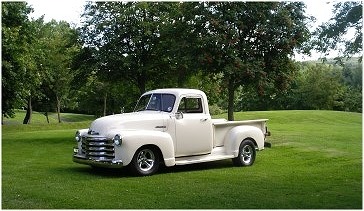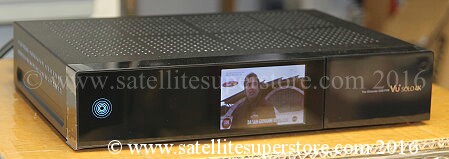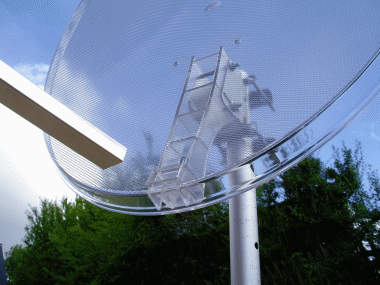Consumer electronics events, products, history & dates
The links below take you to the correct page but you may need to scroll down to find the item.
Dates are confirmed using a number of sources.
1926 Baird (UK) invents the first Television system in January 1926.
It used a mechanical optical scanning system.
Co-incidentally our 1st vintage publication is "
Successful Wireless Reception" 1926
1927 Fairclough (USA) invents the first fully electronic Television system in September 1927.
He developed the electron scanning system and the cathode ray tube.
1936 The start of television transmissions from Alexandra Palace in London.
1937 First major electronic television outside broadcast: the Coronation of King George VI.
Nine thousand tv sets are sold in the London area.
1939-45 Television transmissions are suspended during the Second World War. An estimated
20,000 tv sets in Britain at this time. They resume in 1946 on the 7th June
1941 On the 23rd of December 1941 "Baird" gives first demonstration of 600-line electronic
stereoscopic television in colour.
1944 The world first electronic computer -"Colossus". Design started in March 1943 and the first unit was
operational at Bletchley Park (50 miles to the North West of London) in Jan 1944.
The switches consisted of a large number of thermionic valves (tubes.)
It was used to crack the German codes in the last two years of the Second World War.
1956The 2 inch reel to reel video system was introduced. The first commercially sold machines
were the Ampex VR-1000 and the RCA TRT-1A. Both used the same agreed upon
format - the 2" Quadruplex system. The format utilized 2 inch wide tape loaded on a
monstrous 4800 ft reel.
1958 Videotape recording starts in Britain. Prior to this date the only way to record programmes
was to use film. This was called "telerecording".
1962? 1 inch Machtronics reel to reel video system introduced.
1962 On the 11th of July 1962 is the first transatlantic satellite link via the "Telstar" satellite.
1963 Philips demonstrated the first compact audio cassette using high-quality
BASF polyester 1/8-inch tape that ran at 1-7/8 ips
1963 Ampex introduce the first domestic reel to reel video and TV combined unit weighing
900 pounds and costing $30,000 in a wood cabinet 13 feet long! It used 1 inch tape.
It was available from a retail catalogue.
1964The Philips
EL 3400 was the first stand-alone, 1 inch tape, domestic video
recorder.
1965The Ampex
VR-5003 was the first professional, 1-inch tape, reel to reel video
recorder.
1965 Sony claim the first video tape recorder for home use was their 1/2-inch tape
CV-
2000
including the CV-2000D, the
CV-2010 and the
CV-
2020. Only about 200 were sold in 1965.
1965The Sony
CVC-2000 was the first 1/2-inch tape domestic video camera.
1967Colour TV started in 1967 (using the PAL system) with BBC2 and extended to BBC1 and ITV in 1969
but it was into the mid 70s before colour sets were more widely found in the home.
1967 Sony introduces the world's first portable VTR (1/2 inch reel to reel), the
DV-2400.
It was available
with a camera and power supply. It was followed a couple years later by the popular
DV-3600.
1968 The first really domestic reel to reel video recorder for the home was arguably the Philips
LDL
1002
It used 1/2 inch tape. It had a similar size and weight to an average audio reel to reel recorder.
It was in a domestic wood enclosure and was marketed for the home in the Philips marketing leaflets.
1969 Four host computers were connected together into the initial "ARPANET" and the Internet was born
1969 Akai introduce the worlds 1st 1/4-inch format reel to reel recording system with the
VT-
100 & Vt-110 VTR'S
1970 Sanyo introduce one of the 1st ever hand-held calculators. The
Sanyo ICC-
82D.
1970? 3/4 inch reel to reel video system introduced.
1971 Sony introduce the
U-MATIC video recording system using 3/4 inch tape cassettes.
The units were the
VP-1000 player and the
VO-1600 VCR. The VO-1600
was the worlds first VCR.
1972 Philips introduced the worlds first video cassette recorder for use in the home.
The
N1500 colour VCR has an analogue clock - timer and embedded TV tuner. Price £442 weight 17 Kg.
1973 Philips introduced the
N1501 colour VCR. A face-lifted N1500 with improved colour circuitry
and still frame.
Still with an analogue clock, looked almost the same but black sides instead of wood finish.
Possibly even less made than the N1500. Very rare.
1974
Sony introduce the Umatic
VO-3800 The worlds 1st portable video cassette recorder.
1975 Sony introduce the first popular video recording system. The Betamax
LV-1901 and
SL6200,
and in 1976 the SL-7200 and
SL-7200A The first stand-alone Betamax
unit to be introduced into the United States was the SL 7200 and
SL-7200A in 1976.
This reached the UK in 1978
1975 Philips introduce the
N1502 colour video cassette recorder. Price £649 weight 18 Kg. Digital
clock.
1976 JVC introduce VHS, to become the world's most popular video recording systems. The JVC
HR-3300 is
the
first VHS recorder.
1977 Panasonic also introduce thier 1st VHS recorder, (VHS become the world's most popular video recording systems).
The Panasonic VBT200. A version of the VBT200, the
NV 8600 is introduced into the UK in 1978.
Of course JVC and Panasonic are the same company - MATSUSHITA! The Panasonic is better built and has a
better picture. Compared to the JVC (The JVC was produced in very large quantities), the Panasonic is quite rare.
1977 Philips introduced the
N1700 colour video cassette recorder.
The long-play version of the original Philips N1500 series. Digital clock.
1977 Sony introduce the
SL-8200. This was the first Betamax to have two recording speeds.
The new 1/2 speed capability provided 2 hours recording time on the new L-500 Beta videocassette.
1977 Sony introduce the
SLO-340. This was the first Betamax portable video cassette recorder.
1977 The worlds first "real" desktop computer. The
Commodore PET 2001. Mainly used in
schools and colleges.
1978 The Panasonic
NV 8600. VHS recorder reached the UK at the same time as the
JVC HR-3300. They both
became available in December 1978, and must therefore share the distinction of being the first UK
VHS decks. A number of companies clone it under their own brand names including the
Ferguson Videostar
8922 and the Baird
8922 in the UK.
1978 JVC introduce the first portable VHS recorder. The JVC
HR-4100 EG and Ferguson introduce the
3V01 clone.
1978 Sony introduce "Betamax 2" (half the speed)
1979 The introduction of the double speed VHS system
1980 The worlds first domestic computer Priced under $200.00 appeared in 1980. The Sinclair
ZX-
80.
1980 Brother introduce the 1st ever electronic typewriter. The
Brother EP-20.
1980 The first compact video cassette system. The Technicolor
212E. This little known CVC system used
1/4 inch tape in a small cassette format. It was 4 years before VHS C and 5 years before Video 8.
1981 The first computer to be priced under $100.00 appeared in 1981. The Sinclair
ZX-
81.
1981 (or 1978?) Philips introduced the
Video 2000 video system
1981 IBM launch of the industry standard personal computer. The IBM 5150.
1982 Philips launch the first Laservision player in the UK, the
VLP 700.
1982 JCV introduce the fist VHSC (compact) VCR. The
HS-3C.
1983 Grundig introduced the reversible version of the Video 2000, the 2x8
1983 The worlds first hand portable cell phone. The Motorola
8000x at 28 oz. The Motorola DynaTAC
8000X
phone became the first FCC-approved portable cellular telephone in 1983. Price $3,995
The UK model was the 8500.
1982? Sony introduced the full size Betamax camcorder. The
Sony BMC100P 1983/1984.
The first unit to have the video recorder and camera in one unit.
1984 JVC introduce the first compact (VHS-C) version of the VHS system and the
GR-C1. VHS-C
camcorder.
1985 Sony introduced the final Super-Beta system
1985 A group of manufacturers started to produce the agreed video standard called Video 8
1985 Panasonic introduce the worlds first full size VHS cassette camcorder. The
Panasonic
M1
1985 The first book sized 8mm video camera. The
Sony CCD-M8
1985 The
first domestic satellite receivers for the
home arrived in the shops.
1986 JVC follow the GR-C1 with the
GR-C7. In 1986 it is the world's smallest and lightest VHS-C
video camcorder.
1987 JVC Introduced the HR-S7000, the world's first S-VHS video recorder
1988 Panasonic claim they introduced the SVHS recording system in 1988 but the
parent company own Panasonic and JVC!
1989 Motorola introduce the worlds first "flip" phone. The
Motorola MicroTAC
1989 Motorola introduce the worlds first Tr-band phone. The
Motorola Timeport
1994 The first GSM cell phone was the Nokia 1011. The first manufacturer to launch
a series of hand-portable phones for all digital standards (GSM, TDMA, PCN, Japan Digital).
It was also cloned by a number of other companies including Philips.



